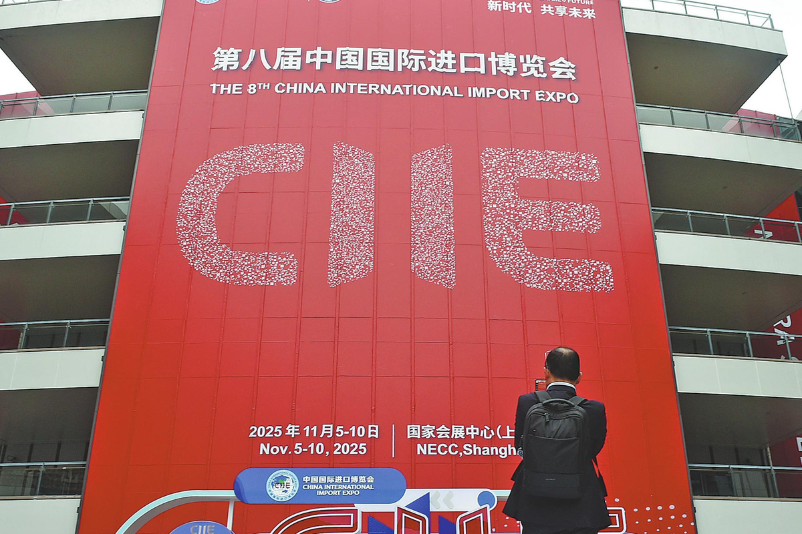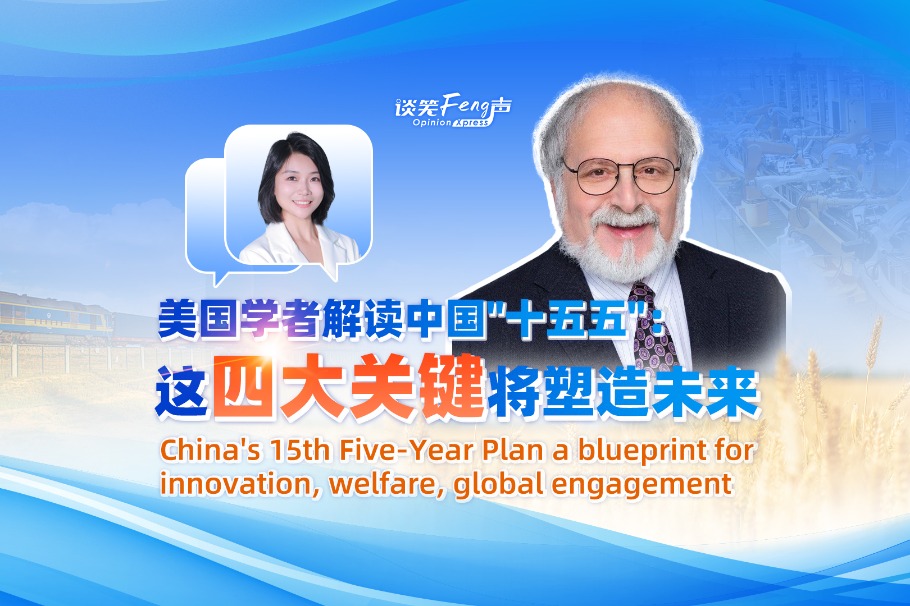Continuing yet evolving role
China is no longer just a growth driver for the Asia-Pacific, it is a provider of regional public goods


Over the past two decades, Asia-Pacific regional integration has been propelled primarily by free trade and the industrial division of labor. However, amid global supply chain restructuring and a resurgence of protectionism, regional economic integration in the Asia-Pacific is facing new challenges.
Structural shifts in the world economy are now providing fresh momentum for regional cooperation to enter a new phase, while the resilience of the Asia-Pacific Economic Cooperation mechanism as a "platform for consensus" is becoming increasingly significant.
For the Asia-Pacific economy, the key to future growth lies in improving quality rather than merely expanding openness. Member economies are shifting from traditional trade liberalization toward "rule coordination" and "standard harmonization", achieving a new growth balance through data governance, clean energy and innovation chain development. China's role in Asia-Pacific economic cooperation is evolving from being solely a growth driver to a provider of regional public goods.
The fourth plenary session of the 20th Central Committee of the Communist Party of China, held in October in Beijing, adopted the Recommendations for Formulating the 15th Five-Year Plan for National Economic and Social Development, calling for steadily expanding institutional opening-up and safeguarding the multilateral trading system. This policy orientation aligns closely with APEC's goal of building an open, inclusive, resilient and peaceful Asia-Pacific community.
On the regulatory front, China continues to promote the high-quality implementation of the Regional Comprehensive Economic Partnership and is actively seeking to join the Comprehensive and Progressive Agreement for Trans-Pacific Partnership. In 2024, China's trade volume with RCEP members grew 4.5 percent year-on-year, demonstrating that regional cooperation has become a key pillar of China's open economy.
In the green and digital spheres, China's Green Silk Road and Digital Silk Road initiatives are becoming deeply integrated with APEC's agenda. The Asia-Pacific Model E-Port Network and the APEC Cooperation Network on Green Supply Chain, both initiated by China, have become important platforms for regional cooperation on the digital and green upgrades for trade.
In his remarks at the APEC meeting in Gyeongju, the Republic of Korea, President Xi Jinping said: "We must join hands rather than part ways, and strengthen our links rather than sever them", urging all member economies to jointly safeguard the stability of global industry and supply chains. This not only responds to the current concerns over global industrial security but also demonstrates China's governance approach — resolving divisions through cooperation and shared governance. In short, China is transforming from a regional manufacturing hub into a center of institutional innovation and public governance, with its vision of openness injecting stability and sustainability into Asia-Pacific cooperation.
In Southeast Asia, cooperation between China and the Association of Southeast Asian Nations is becoming more institutionalized. China has remained ASEAN's largest trading partner for five consecutive years, with bilateral economic and trade relations continuing to deepen. In October 2024, negotiations on the Free Trade Area 3.0 Upgrade Protocol between China and ASEAN were concluded. The upgrade protocol was officially signed last month, marking a new phase of quality enhancement for this globally renowned free trade area. The upgrade has not only set a new benchmark for free trade agreements in the Asia-Pacific region but also generated a synergistic effect with the high-quality implementation of the RCEP, providing strong institutional support for the creation of a closely connected Asia-Pacific economic circle. It is foreseeable that, with further advancement of the FTA upgrade and connectivity initiatives, China-ASEAN relations will reach new heights during the 15th Five-Year Plan period, continuing to provide robust momentum for regional economic growth.
Across the Pacific Rim, the warming of China-Australia economic and trade relations has sent positive signals for regional cooperation. Through dialogue and consultation, the two sides have properly resolved a series of trade disputes involving barley and other products. As China resumes imports of these goods and Australia welcomes back Chinese tourists and students, these developments are offering stability and predictability for businesses and supply chains in both countries. This turnaround shows that communication and cooperation are effective means to ease regional frictions and offers a successful model for restoring other bilateral relations in the region.
Overall, China is building a regional cooperation network based on openness and mutual trust through a three-dimensional approach of rules coordination, project cooperation, and institutional alignment. The maturing of this cooperation network will significantly enhance the economic resilience and policy coordination capacity of the Asia-Pacific region.
However, the path ahead will not be smooth, and regional economies must face and address multiple real-world challenges together. Protectionism remains the greatest risk to regional economic integration. The United States' tariff policies are disrupting trade patterns within the Asia-Pacific region. In recent years, the effective implementation of the RCEP and the successful upgrade of the China-ASEAN Free Trade Area have been strong demonstrations of regional countries' joint efforts to resist protectionism and defend free trade. Looking ahead, all parties should actively advance regional integration initiatives such as the Free Trade Area of the Asia-Pacific and pursue high-standard institutional opening-up to effectively counter the negative impact of tariff barriers and consolidate an open regional economic environment through concrete actions.
APEC is more than an annual gathering — it is a mechanism rooted in long-term regional trust. Its value lies in offering certainty in an uncertain world. For China, the Gyeongju meeting represented a continuation of its diplomatic practice. It was also an example for China's determination to open up at a higher level, which will be further aligned with regional development throughout the 15th Five-Year Plan period. Through institutional innovation, green cooperation and technology sharing, China is taking concrete steps to advance Asia-Pacific economic and sustainable development into a new phase.
The future of the Asia-Pacific belongs to those committed to dialogue, innovation and joint progress. Only through joint contributions for shared benefit can the region achieve truly sustainable prosperity.
Wen Jing is a postdoctoral fellow at the Center for International Security and Strategy at Tsinghua University. Luo Jing is a postgraduate at the European University Institute. The authors contributed this article to China Watch, a think tank powered by China Daily. The views do not necessarily reflect those of China Daily.
Contact the editor at editor@chinawatch.cn.


































